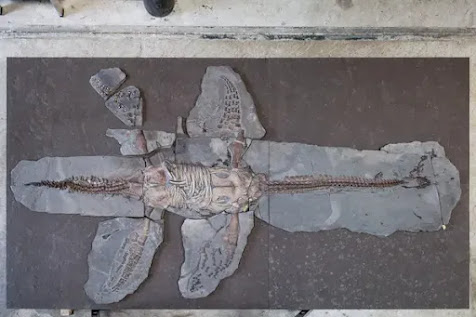MR. MARX'S team analyzed three soft-tissue skin samples, from a flipper and the tail of a long-necked plesiosaur specimen. The species is to be named in a future peer-reviewed paper.
But the samples came from the Posidonia Shale in Germany, where the ocean chemistry preserved soft tissues. That left it frozen in time.
Some of the tissue remains were so flawlessly fossilized that researchers could see skin cell nuclei under a microscope.
While it's difficult to know for sure how extinct animals would have maneuvered through their environments, Mr. Marx said that the scales observed on the plesiosaur had probably stiffened the trailing edge of the flipper, allowing for enhanced propulsion through the water, another feature shared with today's sea turtles.
Plesiosaurs may also have used scales on their flippers for traction and protection as they sifted through sand and vegetation on the ocean floor for food.
Previous research suggests that preserved marine trackways found in Italy came from plesiosaurs, another indication that they might have spent time feeding at the bottom of the ocean.
The World Students Society thanks Sara Novak.

.png)


0 comments:
Post a Comment
Grace A Comment!